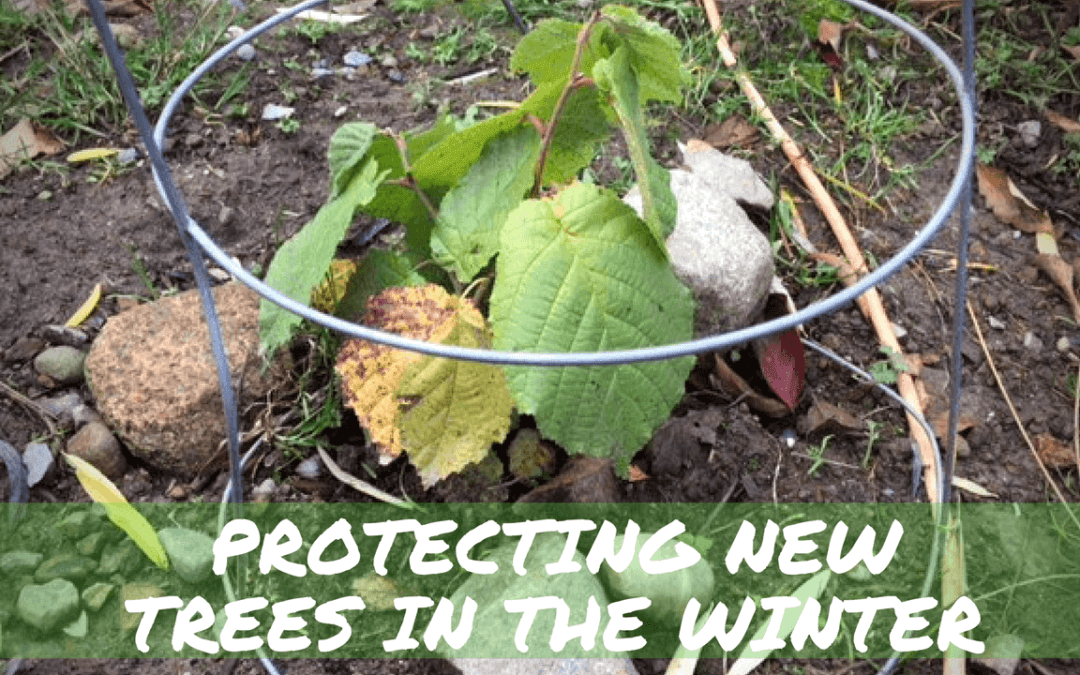I kept finding these hazelnuts in my yard. Come to find out my neighbor has a hazelnut tree that they just took out and apparently the birds love to fly around with these things, dropping them in my yard from time to time. Well, one decided to sprout this summer and had a fairly hefty little stalk going already so I decided to transplant it in a larger pot and nurse it a bit to increase its root system and see if we can grow a hazelnut tree.
Well, as everything else on my deck started to die this Fall I decided to transplant it to its permanent spot in the backyard. I wanted to protect it but also make sure it survives the winter.

Checklist for New Trees:
As with any new planting regardless of the time of year, water is one of the most important things to provide a new tree or sapling to get it to take root in the new soil. Young trees, especially evergreens, need a lot of soil moisture through their first two or three winters. If the ground freezes, you may need to irrigate during the winter so that water can actually get through the soil.
Mulch your new tree. In late fall to early winter, you’ll want to put 2-inch thick layer of organic mulch around the new tree. Of course, my little tree doesn’t need much because of its size, but new trees that are at least 5 feet taller so, need a good 2 to 3 inch layer of mulch to protect the water, keep the tree roots and trunk warm, and will help in colder zones if the soil freezes.
Stake your tree. I’ve decided to put a tomato cage around my tree to keep it protected from any little rodents or pets that may want to run through it or over it and destroy it before it even gets a chance to get some height. If the tree is in a windy area or is top-heavy, you may want to state the tree to keep stabilized as it grows, however, do this sparingly, because the more winded that a tree takes, the more the roots will compensate and actually protect the tree even more.
Winter burn can be an issue. This result in the inability of the young roots absorbing enough water to prevent excessive loss from winter winds. You might want to consider building up a windbreak around the plants or using burlap to protect them from the wind.
Don’t fertilize 6 weeks before first fall frost to allow the tree to harden properly.
Of course, it can be almost impossible to know if you’re tree survived the winter if the leaves fall off. It’s a waiting game. You just hope for those first little green buds to show themselves in the spring. But if they do, chances are pretty good that the tree has taken root and will provide you with years of gratitude. At least, that’s what I’m hoping from my little hazelnut.
